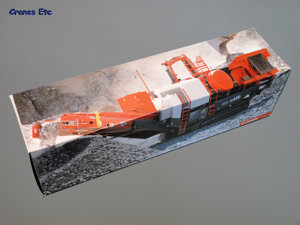 | | Sandvik box. |  | 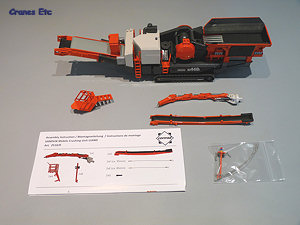 | | The various model parts. | 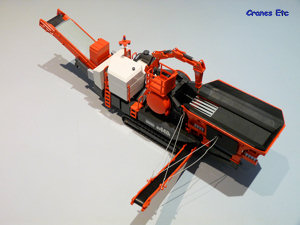 | | The support wires for the fines conveyor are not all taut so it might be better to remove a couple. | 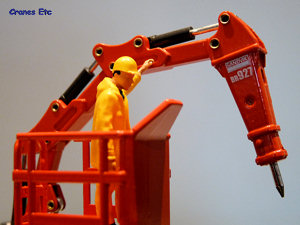 | | The breaker looks good although the rivets are a bit obtrusive. | 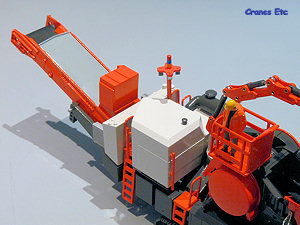 | | The cover to the rear belt is plastic - one of the few plastic parts on the model. | 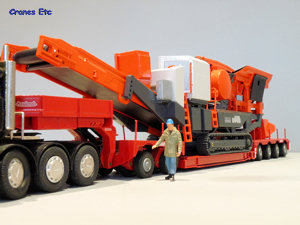 | | Loaded on suitable transport, it is an impressive load. | 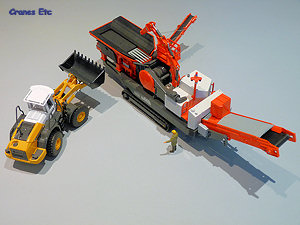 | | It looks good paired with a loader. |
| The Sandvik UJ440i is a mobile crushing unit which weighs in at over 60 tonnes and the 'i' in the product name indicates intelligence as it has electronic process control and can also communicate with other Sandvik machines. The rated capacity of the UJ440i is 600 metric tonnes per hour. The machine as modelled includes an optional BR927 hammer for breaking large rocks stuck in the hopper.
Packaging
The model comes in a nice box with an excellent photo of the real machine extending over two sides. One side of the box includes interesting information about the real machine. Inside, the model is securely packed within expanded polystyrene trays and the review model had no defects or missing parts.
Good colour instructions are provided with the model and assembly is straightforward with only fitting the fines belt proving to be a little fiddly.
Detail
The model feels heavy and strong out of the box, as this is one of those very robust Conrad models. The tracks are rubberised plastic although they look fine. They are mounted on solid track frames although apart from the sprocket and the idler wheel there are no other moving parts.
he hopper is nicely cast with good structural detail and the inside is all lined with rubber to replicate those that can be fitted to the real hopper to reduce noise and wear. A distinctive grizzly sieve allows natural fines to drop down to the fines conveyor rather than entering the crusher. The fines conveyor is metal with a rubber belt and is supported by four guy lines attached to the body. Unfortunately these do not all appear taut when attached so some collectors might prefer to just use two lines.
All of the equipment in the area of the crusher is modelled in metal including the access platform and the hydraulic hammer. The hammer is a nice part but the rivets are a bit obtrusive and some thin friction rivets would have looked much better, and some hydraulic hosing would have added to the detail. All the other steps and hand rails are also modelled in metal. This includes the signal post with its four floodlights.
The main conveyor has a nicely cast structure with some good details contained within it, and the rubber belt is really good. The dust suppression cover on top is plastic but it is good quality so it does not look out of place.
Features
The tracks can be rotated although they are a little too stiff to rotate themselves by pushing the crusher along.
Both the fines and main conveyors have smoothly travelling belts giving the impression of being very well engineered parts. The fines conveyor can be positioned on either side of the machine and as it is removable it is viable to use the model as a transport load. The hopper sides cannot be dismounted to reduce the transport width but this does not detract much. The main conveyor can be fixed in one of four elevations by using the supplied plastic pins.
The breaker arm is very well articulated and can be posed in any position.
Quality
The model is well made and strong in true Conrad style, with limited use of plastic. The paintwork and graphics are very good.
Price
It is relatively expensive probably due to low production numbers and the extensive use of metal.
Overall
This model is good looking and it is good to see a relatively unusual piece of equipment like this being modelled. It poses well on a low loader, or with other loading equipment. It is recommended to anyone wanting a good quality model in this sector.
Footnotes
The model first appeared at the end of 2009 and was initially available only from the Sandvik shop. It was widely released in 2010.
|
| |
| 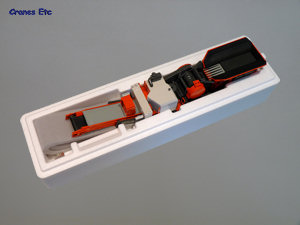 | | The model inside the box. | 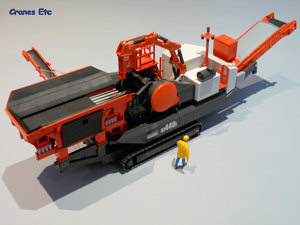 | | The crusher with the various parts fitted. | 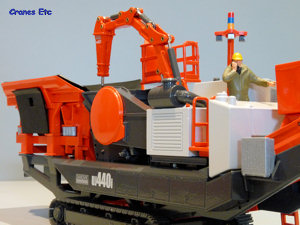 | | Heavy metal construction. | 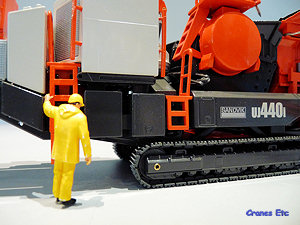 | | The tracks are plastic but look effective nonetheless. | 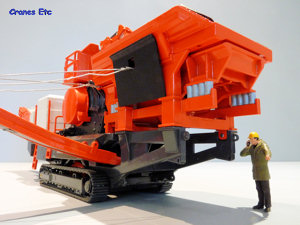 | | This is a big machine. The suspension on the hopper is represented by the grey parts. | 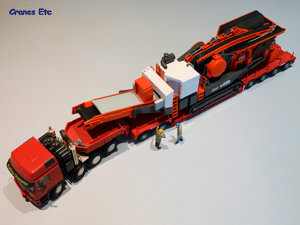 | | Being carried on a Nooteboom low loader. |
|

